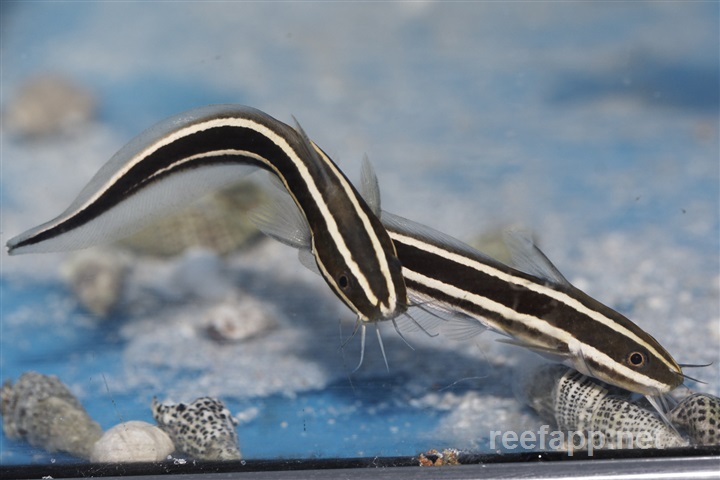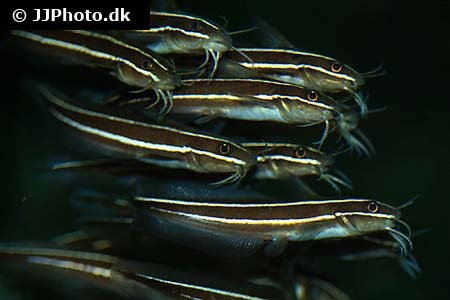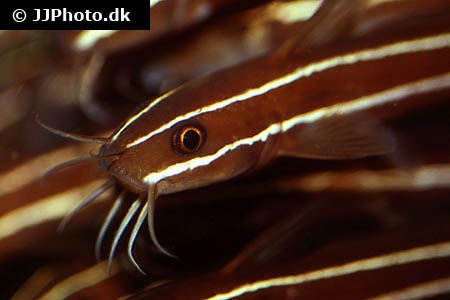Plotosus lineatus
| Latin name | Plotosus lineatus - (Thunberg, 1787) |
|---|---|
| Local name | Striped eel catfish |
| Family | Plotosidae - Plotosus |
| Origin | East Indian Ocean, West Indian Ocean, Australia, Japan, The Red Sea, Indonesia, East Pacific, New Zealand, Central/West Pacific |
| Max length | 32 cm (12.6") |
| Minimum volume |
600 l (158 gal) |
|---|---|
| Hardiness |
Hardy |
| Suitable for aquarium |
Suitable with care |
| Reef safe |
Reef safe with caution |
| Aggressiveness | Peaceful |
| Recommended |
Fish Larger crustaceans (Shrimp, crabs...) Other invertebrates Small crustaceans (Krill, mysis, artemia...) |
|---|
This species can be a threat for small fishes, crustaceans, worms, snails etc.
This species searches through the sand for food, which can make the water cloudy and shakes up detritus.
In an aquarium their natural food source in the sand is quickly exhausted.
This species is highly venomous and this venom can, under certain circumstances, be fatal.
In case of poisoning, it is vital to have as much information as possible regarding the species/poison. Have telephone number for the poison hotline close to the aquarium.
Since people can have different reactions to poisons, take precautions necessary to ensure your safety and that of your surroundings.
This fish requires feeding several times a day, especially when newly added.
When the fish can find its natural food in the aquarium it requires less frequent feeding.
These fish thrive best in a large or small shoal.
When young these fish are mostly black, but become brownish with white or yellow stripes.
There is only species (Plotosus lineatus) in the Eeltail catfish (Plotosidae) genus that lives on the coral reef.
Eeltail catfish are excellent at removing leftover food and dirt from the aquarium.
These fish have poisonous spines by the dorsal and pectoral fins, so care should be taken whith handling. Their poison can be dangerous for humans, especially if one is stung multiple times.
They have a lovely appearance when young, but are less attractive as adults.
Unless kept in a group, they will remain hidden.
Eeltail catfish can swallow both fish and invertebrates in one go.
| Aquarium trade | Yes |
|---|---|
| Distribution | Indo-Pacific: Red Sea and East Africa to Samoa, north to southern Japan, southern Korea, and the Ogasawara Islands, south to Australia and Lord Howe Island. Palau and Yap in Micronesia (Ref. 1602). Sometimes enters freshwaters of East Africa (Lake Mala |
| Danish common names |
Stribet koralmalle |
| English common names |
Striped catfish Striped eel catfish Stripped catfish Striped sea catfish Catfish-eel |
| German common names |
Korallenwels |
| French common names |
Mâchoiron Poisson-chat de mer rayé |
Scott W. Michael. 2001. Reef Fishes volume 1 - TFH Publications / Microcosm Ltd. - (English)
Striped Eel Catfish - Aquatic Community - (English)
Plotosus lineatus - Tropical Fish Hobbyist - (English)




